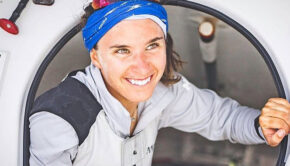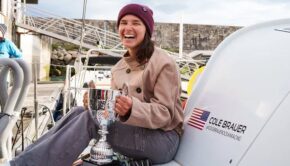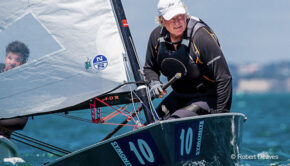Volvo Ocean Race: Upgrading the VO65
Published on October 5th, 2015
The overhaul of the Volvo Ocean Race centred around the move to a one-design class, with the execution of the concept weighing heavily on project manager James Dadd. In this report for Seahorse magazine, Dadd reports on the first use of the VO65…
It is now over three years since Knut (Frostad, Volvo Race CEO) announced the bold move to strict one design racing for the Volvo Ocean Race, and nearly four months since the first such race concluded. Now is the time for reflection and future planning.
As the project manager of the VO65 fleet it was a challenge that I relished, and from which I have learned a great deal. As always with a project of this type and size there are things that you would do differently with hindsight. But now is not the time to look at that, now is the time to look at whether the move worked and what the next steps should be.
Over the course of this race I believe that the vision has been demonstrated as an overwhelming success, but have the boats lived up to that and what can we do to make them even better for the 2017-2018 edition?
The first, and most important element, is that this is not just a one design class, but a manufacturer controlled class, and that manufacturer is independent of the competitors and appointed by the Volvo Ocean Race. It is also the hope that there will be more boats on the line in 2017, so more have to be built.
Buying a new boat must not be seen as a necessity to be on the podium next race. So any updates we consider have to be applicable to the existing seven as well as any new boats in exactly the same way. For this reason we are considering building all of the new boats as per the originals, and then having a fleet-wide upgrade closer to the start of the next race.
So what would those upgrades be? That is yet to be confirmed, but we have some ideas that we are discussing. These upgrades fall into two categories; system tweaks and performance improvement. Some of the system tweaks are due to the simple fact that we didn’t have the time or resources available back in 2012 to build a prototype and get the best ocean racers in the world to test it for nine months.
We have had that chance now, so should use what we have learned. Thanks largely to the Volvo Boatyard, ran by Nick Bice, we have a huge amount of data and input on what worked and what didn’t. The great thing is that the top of the list items are heads-plumbing and the galley arrangement. In my view, if these are at the top of the list, we should be very happy with the original set up.
The next group is the performance upgrades. I have seen a great deal of discussion on forums about the boats being slow; though I personally don’t consider a 24-hour run at an average of 23 knots slow. We also have to consider that the weather systems that the fleet experienced this last race would not have produced any records had the fleet been VO70s either.
Yet the leg from Auckland to Itajai was still completed faster than last time, and it was a sailboat race the whole way. And I don’t know about you, but I also struggle to see the difference between 24 and 26 knots when watching via YouTube. So while the performance is important, it must not come at the cost of everything else. That is what has already been proven, so let’s move on.
The problem with performance upgrades is that they virtually all boil down to righting moment. Increase righting moment and it invariably means an increase in loads. In the last 12 months we have seen that the current safety factors are doing their job. Nico and crew stepped off onto a reef and other serious groundings have been experienced with minimal damage to structures.
The rigs have also seen loads that would suggest that increasing righting moment would require a wholesale rethink. Requiring a multi-million euro refit goes completely against the idea of the VO65 project and reducing the entry costs. As such, this list is short, and pretty much limited to learning from the first generation sails and making the kind of tweaks that you would expect to see in developing generation 2 sails and consumables that will be replaced by next race anyway.
There are however areas where system tweaks could also improve performance. With the constant improvements in communication equipment we are looking at streamlining much of the media equipment, improving connectivity, speed and reducing complexity and weight.
This might sound like a trivial gain, but when all is added up we could save several hundreds of kilos in weight, noticeable windage, and make the boats look better. This then goes further into hopefully reducing the fuel demands of this equipment, along with the general electronics package.
Doing all this will also hopefully allow us to look at alternative power sources. This could simplify systems, reduce heat build-up in the cabin and open up the space below to improve ergonomics. Plenty of gains there. But it could also reduce the all up weight of the boats.
Right now the aim is a weight reduction of 500kg in sailing weight condition. Not something I will be able to see on YouTube, but something that will bring all of the last crews back down the learning curve a distance, and allow new teams to make gains so that next race we have more boats and even closer competition.
NOTE: This column was re-published with permission from Seahorse magazine (September 2015). Information about Seahorse can be found HERE.










 We’ll keep your information safe.
We’ll keep your information safe.